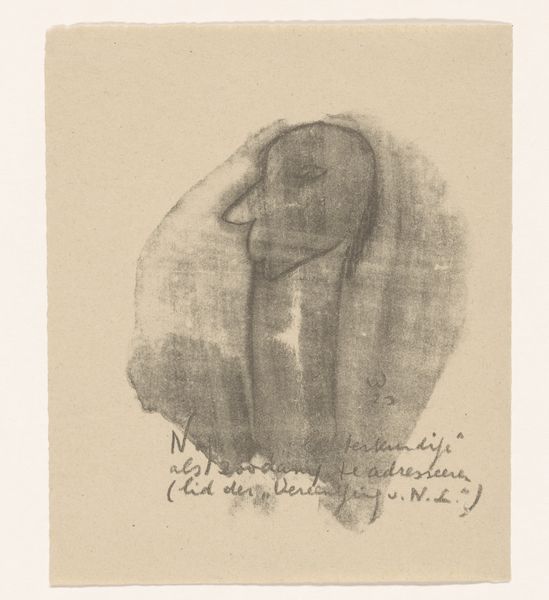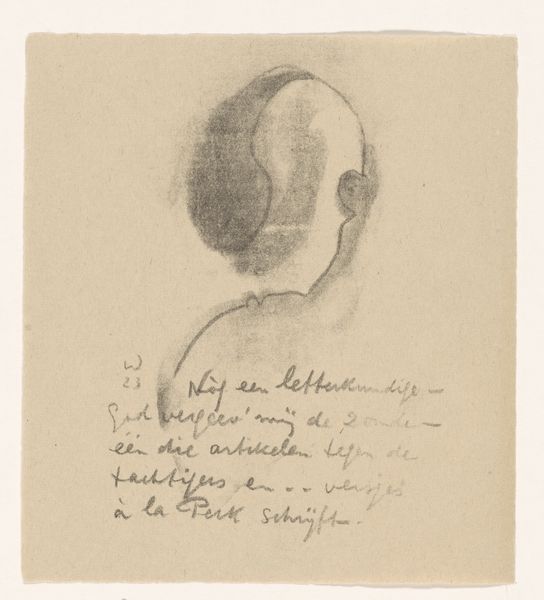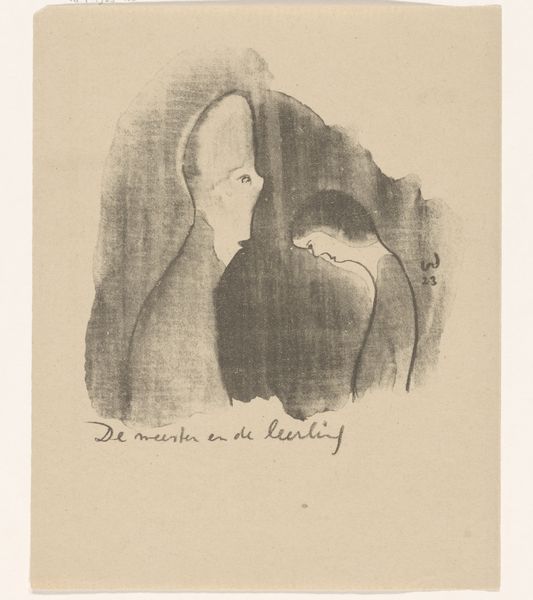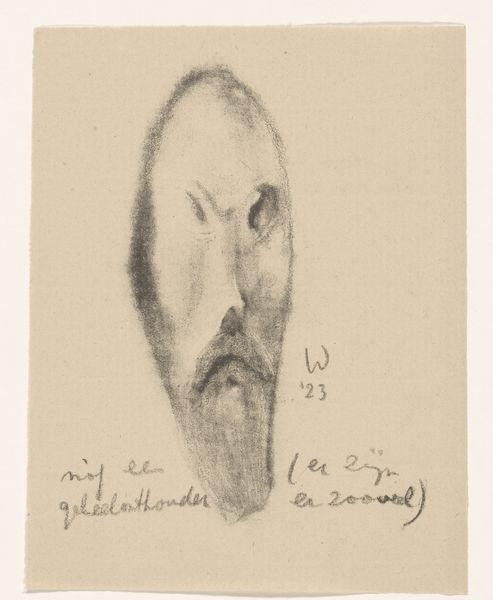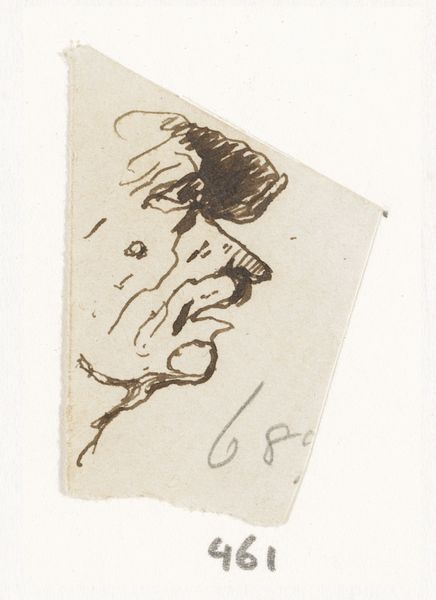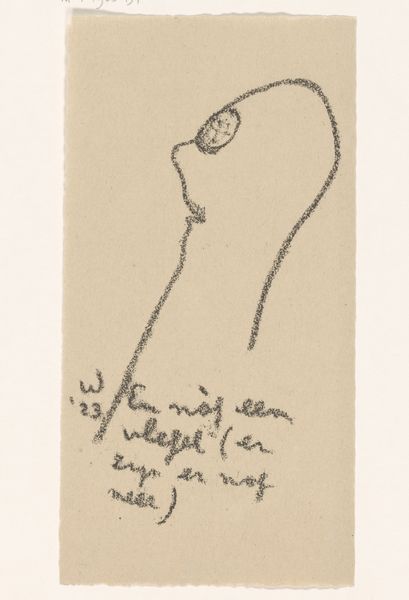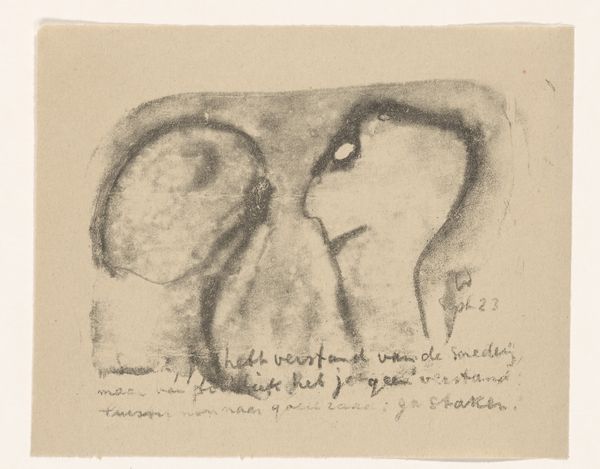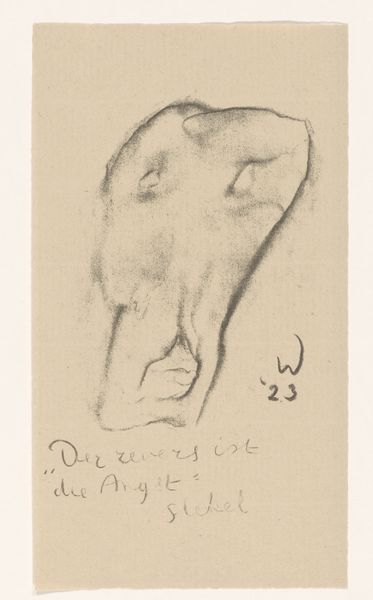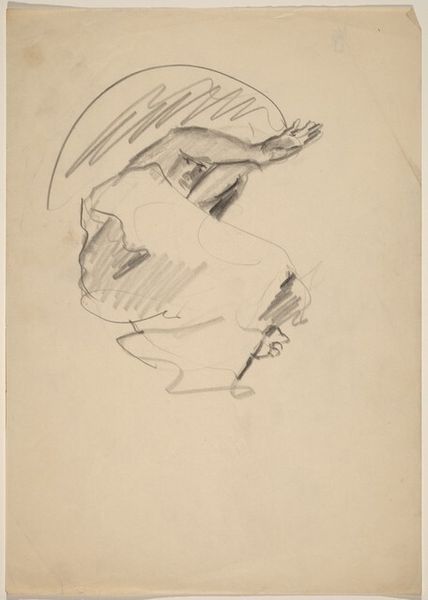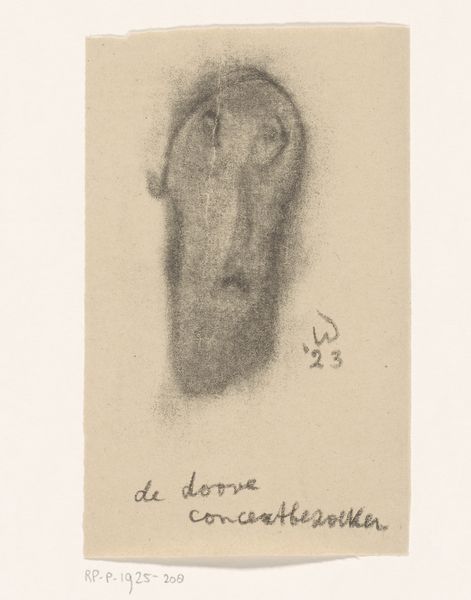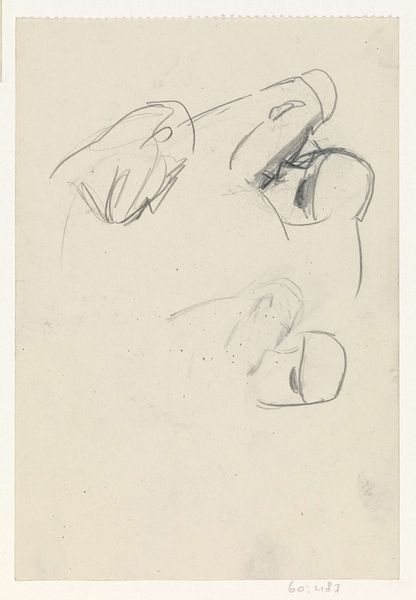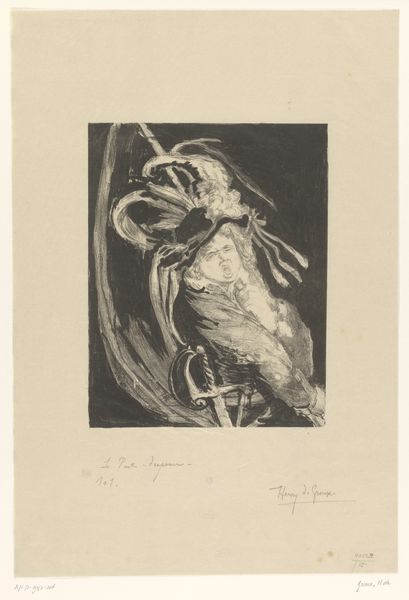
drawing, ink, graphite
#
portrait
#
drawing
#
pen sketch
#
pencil sketch
#
figuration
#
ink
#
expressionism
#
graphite
#
sketchbook drawing
#
modernism
Dimensions: height 193 mm, width 144 mm
Copyright: Rijks Museum: Open Domain
Curator: This is Erich Wichmann's "Geabstraheerd hoofd met open mond" from 1923. The artwork seems to be an ink and graphite drawing. Editor: It's intensely haunting. The way the figure's head seems to almost dissolve into the page creates a sense of profound unease and perhaps loneliness. Curator: The fact that this work is a drawing invites us to consider it as process. We're seeing not just a finished image but also the direct result of the artist's hand, the pressure of the graphite on the paper, the speed and rhythm of his mark-making. Did Wichmann see the creative labor involved with these choices? Editor: I think we need to think about the social and personal anxieties permeating Europe in the 1920s, with the aftershocks of war, revolution, and massive social changes. An abstracted head, mouth agape... Is it screaming, gasping, or trying to speak? It reflects an era of upheaval and a questioning of identity, not only on Wichmann's side but on the spectator as well. Curator: Given Wichmann's involvement with various artistic groups throughout his career, it would be beneficial to trace whether there was a tangible labor movement embedded within any collective aesthetic goals. Can we see this within this piece? What are we to make of his inscription at the bottom of the drawing? Editor: The Dutch inscription adds a layer of meaning, but my understanding suggests it hints at lament or existential disillusionment. We can’t overlook Wichmann’s own complex biography; this work seems to be less an aesthetic manifesto, more a product of psychological torment or a reckoning with the trauma he personally experienced. It resonates with post-war literature of writers like Woolf and Eliot. Curator: I agree that biographical context is vital but I feel we need to also focus on materials and artistic practice, for a wider view. Editor: Ultimately, Wichmann's unsettling abstraction challenges us to confront not only individual struggles, but also to reflect on the human condition, how society can alienate us from our authentic selves. The image is so open, it leaves a lot of room for interpretation and that's, possibly, what makes it so enduring. Curator: Right, a really challenging work – many material aspects, much contextual ground.
Comments
No comments
Be the first to comment and join the conversation on the ultimate creative platform.
